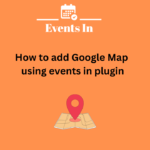Data-driven decision-making has become a cornerstone of successful event management. By analyzing attendance data, educational institutions can:
- Identify Attendance Patterns: Understand who is attending events, when they are attending, and what types of events attract the most participants.
- Optimize Event Planning: Tailor events to meet the interests and needs of the target audience, improving relevance and appeal.
- Enhance Participant Engagement: Foster greater engagement by delivering more personalized and meaningful event experiences.
- Improve Resource Allocation: Allocate resources more effectively by understanding which events generate the most interest and engagement.
- Measure Success: Evaluate the success of past events and use these insights to inform future event strategies.
Leveraging Event Analytics for Attendance Improvement
Our Events In WP plugin provides comprehensive analytics features that allow educational institutions to capture, analyze, and act on event data. Here’s how educational institutions can use these analytics to improve event attendance:
- Tracking Attendance Metrics: Registration and Check-in Data: Monitor the number of registrations, check-ins, and no-shows for each event. This data helps identify the gap between initial interest and actual attendance.
- Demographic Information: Analyze attendee demographics such as age, gender, department, or class year to understand which segments of the campus population are most engaged.
Analyzing Attendance Trends
- Time and Date Analysis: Identify the most popular times and days for events. This information can guide scheduling decisions to maximize attendance.
- Event Type Preferences: Determine which types of events (e.g., lectures, workshops, social events) are most popular. Use this data to plan events that align with audience preferences.
- Feedback and Surveys: Collect post-event feedback through surveys to gain insights into attendee satisfaction and areas for improvement.
Enhancing Event Promotion
Targeted Marketing: Use demographic and attendance data to tailor marketing efforts. Promote events through channels that resonate with the intended audience.
Personalized Invitations: Send personalized invitations and reminders to potential attendees based on their past attendance patterns and interests.
Optimizing Event Design
Content and Format Adjustments: Use feedback and attendance data to refine event content and formats. For example, if workshops receive higher attendance than lectures, consider incorporating more interactive elements.
Logistical Improvements: Analyze data related to event logistics, such as location and facilities, to make necessary adjustments that enhance the attendee experience.
Engaging Non-Attendees:
Understanding Barriers: Analyze data on non-attendees to understand common barriers to attendance. This could include time conflicts, lack of awareness, or perceived relevance.
Incentives and Motivations: Develop strategies to overcome these barriers, such as offering incentives for attendance or ensuring that events are relevant to the target audience’s interests and needs.
Continuous Improvement:
Iterative Process: Treat event planning as an iterative process where each event provides data that informs the next. Use insights from previous events to continually refine and improve future events.
Benchmarking Success: Establish benchmarks for success based on past attendance data and set realistic goals for improvement. Track progress over time to measure the impact of data-driven strategies.
Case Study: Successful Implementation
Let’s consider a hypothetical case study of a university that successfully used data-driven insights to improve event attendance.
University XYZ noticed a decline in attendance at their annual career fair. By using the Events In WP plugin, they collected detailed data on registrations, demographics, and post-event feedback. Analysis revealed that students felt overwhelmed by the number of employers and preferred more focused, industry-specific events.
In response, University XYZ segmented the career fair into smaller, industry-specific fairs held over multiple days. They used targeted marketing campaigns to promote these events to relevant student groups based on their majors and career interests. Additionally, they adjusted the timing of the events to avoid conflicts with popular class schedules.
The result was a significant increase in attendance and participant satisfaction. The focused events allowed for more meaningful interactions between students and employers, ultimately leading to better outcomes for both parties.
Conclusion
In conclusion, improving event attendance through data-driven insights is a powerful strategy for educational institutions seeking to enhance campus engagement and deliver successful events. By leveraging the analytics features of the Events In WP plugin, institutions can track attendance metrics, analyze trends, optimize event promotion, and continually refine event design. This data-driven approach ensures that events are tailored to meet the needs and preferences of the campus community, fostering greater participation and creating a more vibrant and connected campus environment. As educational institutions continue to prioritize engagement and student success, adopting data-driven event management practices will be key to achieving these goals. Download our WordPress event plugin today!






